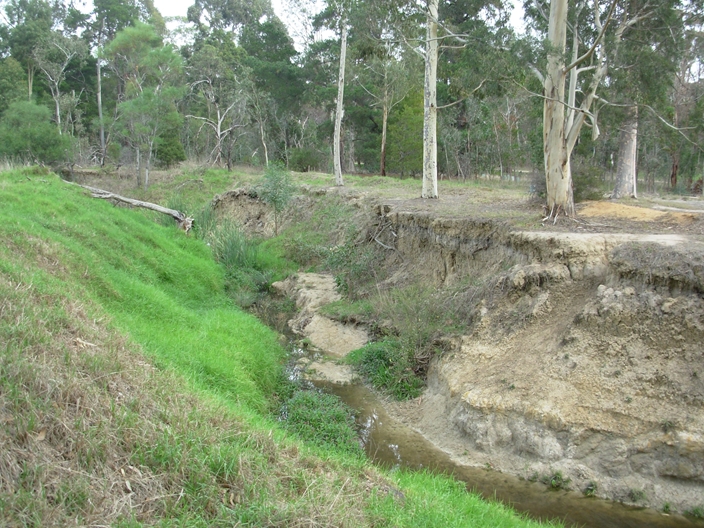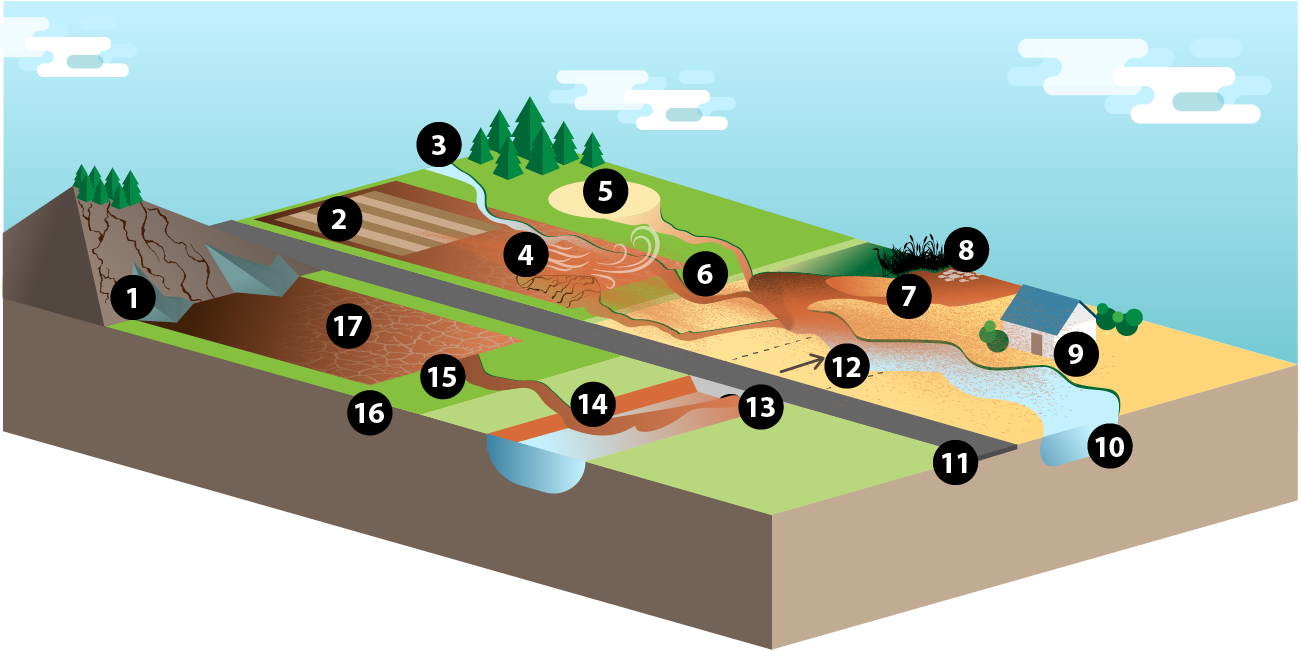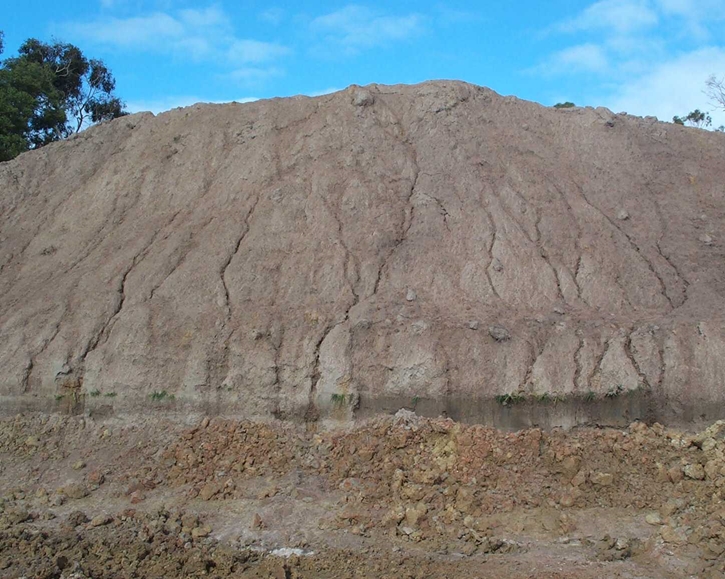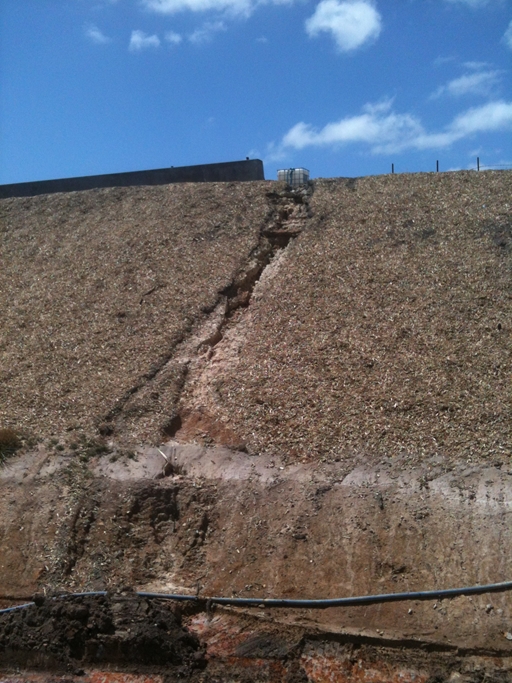Overview
What is this guide about?
This guide presents a risk-based approach to preventing and minimising impacts from erosion and sedimentation. This is a general guide, and does not include detailed information on risk controls. For further information and tools see Further technical information.
Sections include:
Who should use this guide?
This guide is for those involved in undertaking the following activities:
- exposure of bare soil, or activities undertaken on exposed soil
- building and maintaining roads, rail, bridges, utilities (gas, water, electricity, telecommunications) drainage, embankments, and clay dams
- land rehabilitation
- material excavation, stockpiling, handling and transfer
- catchment management.
Some examples of industries which should refer to this guide include, but are not limited to:
- land development
- construction
- forestry
- infrastructure building, protection and maintenance
- landscaping
- bulk material suppliers and transfer
- earthworks builders and contractors
- water suppliers.
What is erosion?
Erosion is the movement of soil or other loose materials by wind or water energy (typically downslope) which wears away the soil surface, and can be aggravated by soil disturbance activities. In dry conditions this can lead to dust emissions, and in wet conditions can lead to the formation of soil ruts (rills), tunnels, and gullies. Both wind and water erosion can lead to deposits of sediment (sedimentation) into low lying areas like natural waterways as well as artificial drainage systems.
The amount of erosion that occurs is generally determined by:
- the power (volume and speed) of wind or water passing over the soil within a period of time
- soil type and stability
- slope grades.

Figure 1: Erosion and sedimentation process
Stream bank erosion along Salt Creek
(Source: Peter Higgins - State Plant Hire & Statewide River and Stream Management)
Wind or water energy
Wind or flowing water applies
force to exposed soil or materials

|
Erosion
Soil materials are shifted by force which can
damage soil profiles, embankments or stockpile
structures, and emit wind-borne dust

|
Sedimentation
Loose material is transported and
deposited into low-lying areas
impacting waterway health, and
clogging drains and culverts
|
|

Figure 2: Site model demonstrating potential erosion and sediment issues
Conceptual Site Model (Click to expand)
|
|
1. Surface ruts forming on slopes
2. Land clearing and development
3. Undiverted water from offsite
4. Wind erosion
5. Cleared vegetation
6. Sediment runoff
|
7. Shallowed out streambed from sediment deposits increases flood risk
8. Sediment impacts on plants and aquatic
9. Dust affected housing
10. Natural waterway
11. Road and drainage infrastructure
12. Clogged drainage line
13. Sediment clogging drain culvert
|
14. Unstabilised drainage embankment resulting in gully erosion
15. Sediment runoff
16. Soil profile
17. Top soil subject to loss from wind erosion
|
Why is preventing erosion important?
It is important to manage erosion risks to prevent impacts on the environment, community, and other assets such as those listed below.
Environment and community
- Erosion can degrade soil profiles and embankments, which are then less able to support native vegetation.
- Dust from wind erosion can impact on human respiratory health and cause nuisance and amenity issues.
- Sediment material (as a result of erosion) deposited into water bodies like streams, rivers, lakes and estuaries can:
- increase turbidity (cloudiness), which reduces light penetration, and can affect plant and animal health and oxygen levels
- transport other contaminants such as chemicals or pathogens (e.g. dieback fungus)
- settle in deeper pools which can remove aquatic habitat
- reduce the depth of stream-and-riverbeds, and increasing the subsequent flood risk.

Figure 3: Rill erosion on a material stockpile
(Source: Fulton Hogan)
Assets
Erosion can damage or degrade:
- top soil quality for vegetation
- material stockpiles
- road, rail, bridge and drainage infrastructure
- river and dam embankments.
What are my obligations?
It is your responsibility (including contractors you manage) to minimise the risk of erosion or sedimentation. Where responsibilities are not met, this can result in:
- community health and amenity complaints
- regulatory enforcement
- reputational damage (this can have contractual implications).
Legal requirements are as set out in:
You should also check for compliance requirements of local government authorities, catchment management authorities and water corporations.

Figure 4: Rill erosion down batter
(Source: Peter Higgins - State Plant Hire & Statewide River and Stream Management)
Important information: The information in these pages is for general guidance only. It does not constitute legal or other professional advice, and should not be relied on as a statement of the law. Because it is intended only as a general guide, it may contain generalisations. You should obtain professional advice if you have any specific concern.
EPA has made every reasonable effort to provide current and accurate information, but does not make any guarantees regarding the accuracy, currency or completeness of that information.
Parties who wish to re-publish or otherwise use the information in this publication must check this information for currency and accuracy prior to publication or use.
All photographs used in this guide have been provided with the express permission of the owner for the limited purpose of this publication. Parties who wish to use any photograph from this guide for any purpose must obtain permission from the cited source.
Continue reading - Risk assessment